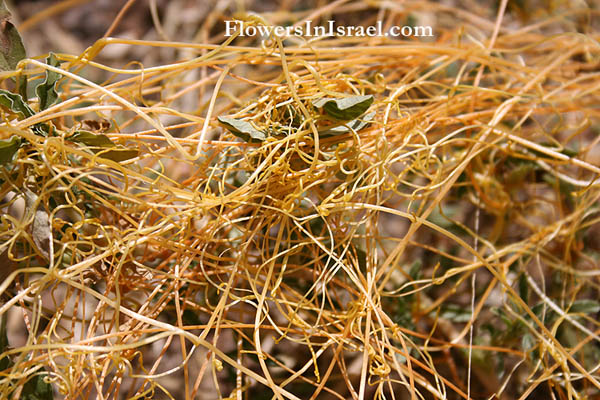Hebrew: כשות השדות, Arabic: خُنيق
| Scientific name: | Cuscuta campestris Yuncker | |
| Common name: | Field Dodder | |
| Hebrew name: | כשות השדות | |
| Arabic name: | خُنيق | |
| Plant Family: | Convolvulaceae, חבלבליים |

|
| Life form: | Parasite | |
| Stems: | Yellow stems, thin, circular in cross section and extensively-branched; 0.2-0.4mm in diameter and smooth | |
| Leaves: | Alternate, scale | |
| Flowers: | White, bell-shaped 2-2.5 mm long; calyx and corolla have 5 lobes; flowers in dense clusters | |
| Fruits / pods: | globular capsules 3-4 mm in diameter containing up to 4 seeds; seeds are tan-coloured, more or less globular but with a flattened side, the surface is granular | |
| Flowering Period: | May, June, July, August, September, October, November, December | |
| Habitat: | Disturbed habitats | |
| Distribution: | Mediterranean Woodlands and Shrublands, Semi-steppe shrublands, Shrub-steppes, Deserts and extreme deserts | |
| Chorotype: | American | |
| Summer shedding: | Ephemeral |

Derivation of the botanical name: Cuscuta, a name of Arabic derivation meaning "dodder" campestris, of or pertaining to a field; on level ground, of fields.
|